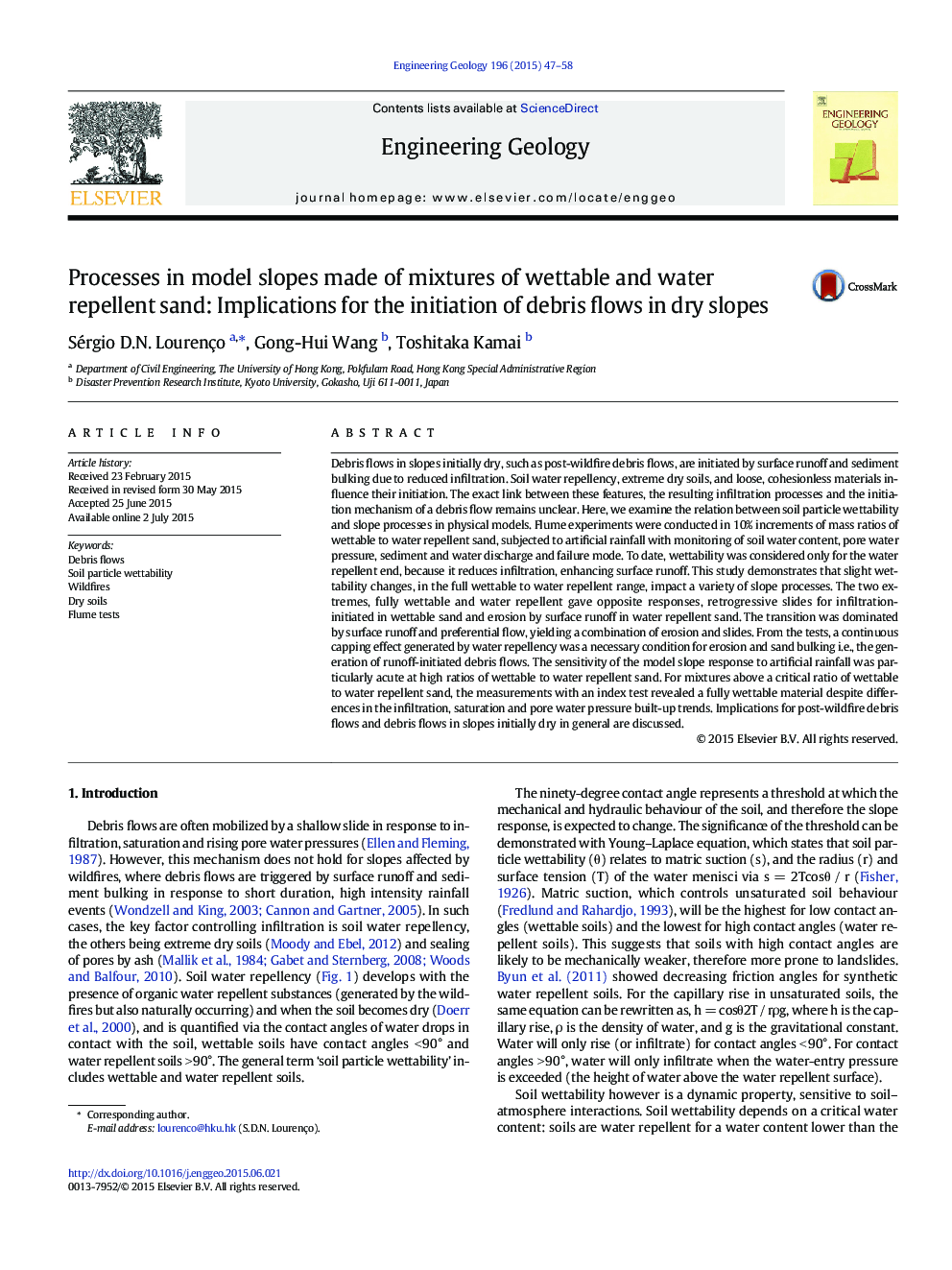| کد مقاله | کد نشریه | سال انتشار | مقاله انگلیسی | نسخه تمام متن |
|---|---|---|---|---|
| 4743347 | 1641789 | 2015 | 12 صفحه PDF | دانلود رایگان |
• Post-wildfire and general dry slopes have variable soil particle wettability.
• Model slopes made of wettable–water repellent sands were subjected to rainfall.
• Debris flow initiation mechanism (from infiltration to runoff) controlled by soil wettability
Debris flows in slopes initially dry, such as post-wildfire debris flows, are initiated by surface runoff and sediment bulking due to reduced infiltration. Soil water repellency, extreme dry soils, and loose, cohesionless materials influence their initiation. The exact link between these features, the resulting infiltration processes and the initiation mechanism of a debris flow remains unclear. Here, we examine the relation between soil particle wettability and slope processes in physical models. Flume experiments were conducted in 10% increments of mass ratios of wettable to water repellent sand, subjected to artificial rainfall with monitoring of soil water content, pore water pressure, sediment and water discharge and failure mode. To date, wettability was considered only for the water repellent end, because it reduces infiltration, enhancing surface runoff. This study demonstrates that slight wettability changes, in the full wettable to water repellent range, impact a variety of slope processes. The two extremes, fully wettable and water repellent gave opposite responses, retrogressive slides for infiltration-initiated in wettable sand and erosion by surface runoff in water repellent sand. The transition was dominated by surface runoff and preferential flow, yielding a combination of erosion and slides. From the tests, a continuous capping effect generated by water repellency was a necessary condition for erosion and sand bulking i.e., the generation of runoff-initiated debris flows. The sensitivity of the model slope response to artificial rainfall was particularly acute at high ratios of wettable to water repellent sand. For mixtures above a critical ratio of wettable to water repellent sand, the measurements with an index test revealed a fully wettable material despite differences in the infiltration, saturation and pore water pressure built-up trends. Implications for post-wildfire debris flows and debris flows in slopes initially dry in general are discussed.
Journal: Engineering Geology - Volume 196, 28 September 2015, Pages 47–58
